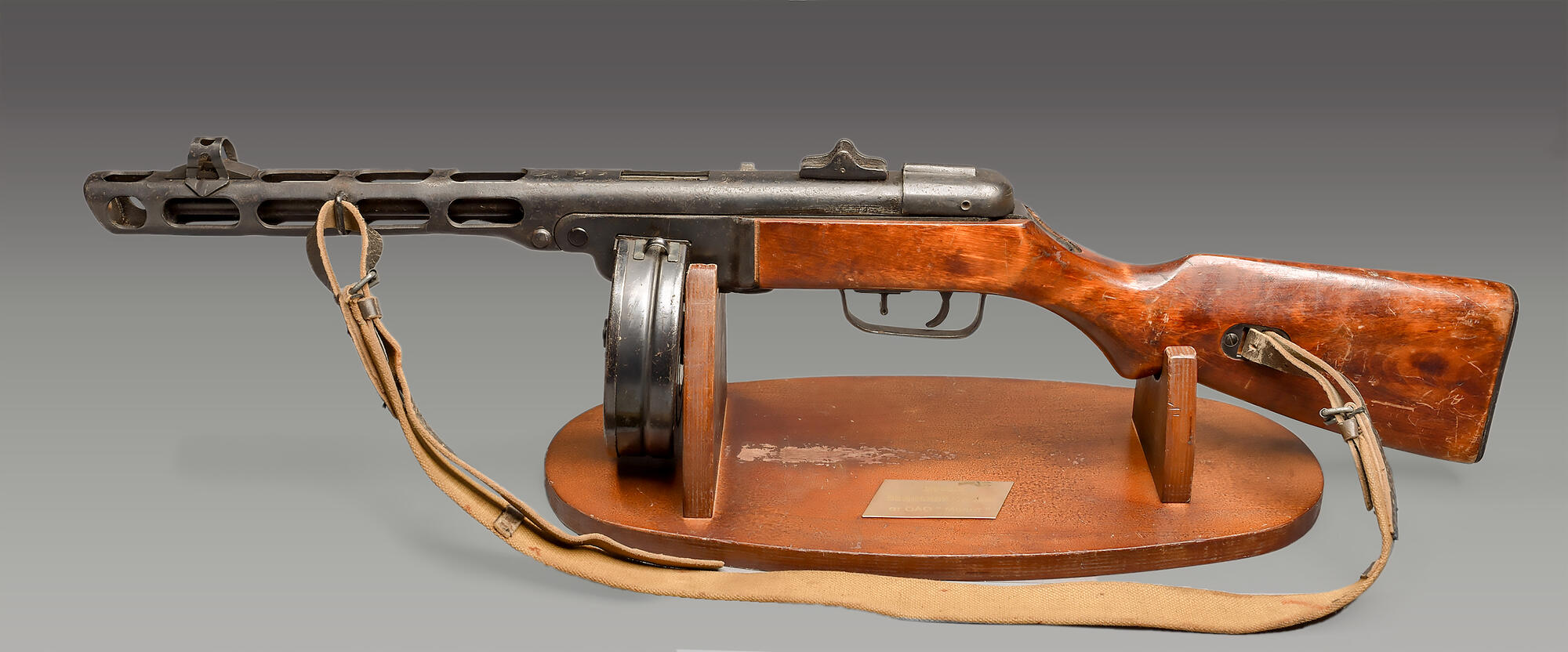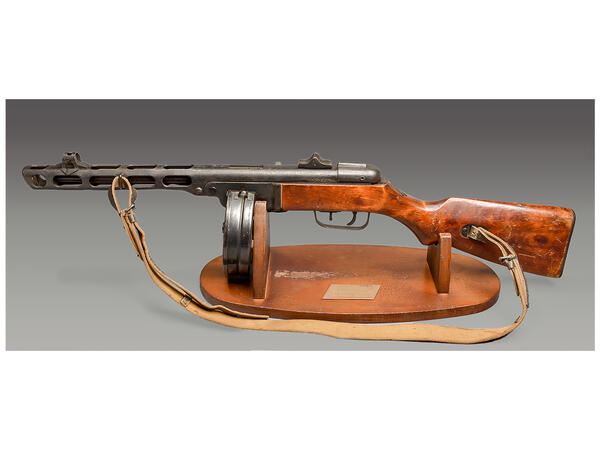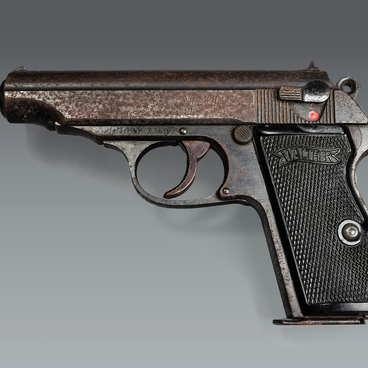The Soviet 7.62 mm submachine gun of 1941 was developed by the designer Georgy Shpagin in 1940. The PPSh was adopted by the Red Army on December 21, 1940.
The PPSh along with the PPS-43 was the basic submachine gun of the Soviet army during the Great Patriotic War.
In the fall of 1941, a machine building plant was evacuated to Vyatka Polyany from Zagorsk, Moscow region. Its equipment for the production of pistols was installed on the territory of the former bobbin factory. The first submachine guns were sent to the front at the end of November 1941, and 1.5 million guns were produced in 1942. The plant’s design bureau was headed by the weapon’s creator Georgy Shpagin.
During the war the collective of Vyatsko-Polyansky machine plant produced more than 2.5 million submachine guns. PPShs were also mass-produced at other plants: the Degtyarev Plant, Kirov Diesel Plant in Tokmak, Kirov Machine-Building Plant in Alma-Ata, the First State Bearing Plant (GPZ-1), Electro-mechanical Plant ‘Zvezda’, and ‘Dalzavod’ in Vladivostok.
The Shpagin submachine gun took twice less time to produce than its predecessor, the Degtyarev submachine gun. It required significantly less metal, and its combat performance was much better. It did not require any vitally important materials during war time, such as high strength alloy steel.
The single fire range of the submachine gun was 300 to 350 meters. On the one hand high rate of fire resulted in a big consumption of ammunition (nicknamed as ‘ammo eater’ for this reason) and quick barrel overheating, but on the other hand it provided high density of fire, giving the advantage in a close combat.
It was used by all companies and battalions of infantry soldiers that were formed in the Red Army by the end of 1942. The widespread use of this weapon during the war influenced the formation of infantry combat tactics in the postwar period, when the importance of dense automatic fire along the entire frontline, to the detriment of the accuracy of fire, was of great importance.
The PPSh along with the PPS-43 was the basic submachine gun of the Soviet army during the Great Patriotic War.
In the fall of 1941, a machine building plant was evacuated to Vyatka Polyany from Zagorsk, Moscow region. Its equipment for the production of pistols was installed on the territory of the former bobbin factory. The first submachine guns were sent to the front at the end of November 1941, and 1.5 million guns were produced in 1942. The plant’s design bureau was headed by the weapon’s creator Georgy Shpagin.
During the war the collective of Vyatsko-Polyansky machine plant produced more than 2.5 million submachine guns. PPShs were also mass-produced at other plants: the Degtyarev Plant, Kirov Diesel Plant in Tokmak, Kirov Machine-Building Plant in Alma-Ata, the First State Bearing Plant (GPZ-1), Electro-mechanical Plant ‘Zvezda’, and ‘Dalzavod’ in Vladivostok.
The Shpagin submachine gun took twice less time to produce than its predecessor, the Degtyarev submachine gun. It required significantly less metal, and its combat performance was much better. It did not require any vitally important materials during war time, such as high strength alloy steel.
The single fire range of the submachine gun was 300 to 350 meters. On the one hand high rate of fire resulted in a big consumption of ammunition (nicknamed as ‘ammo eater’ for this reason) and quick barrel overheating, but on the other hand it provided high density of fire, giving the advantage in a close combat.
It was used by all companies and battalions of infantry soldiers that were formed in the Red Army by the end of 1942. The widespread use of this weapon during the war influenced the formation of infantry combat tactics in the postwar period, when the importance of dense automatic fire along the entire frontline, to the detriment of the accuracy of fire, was of great importance.



